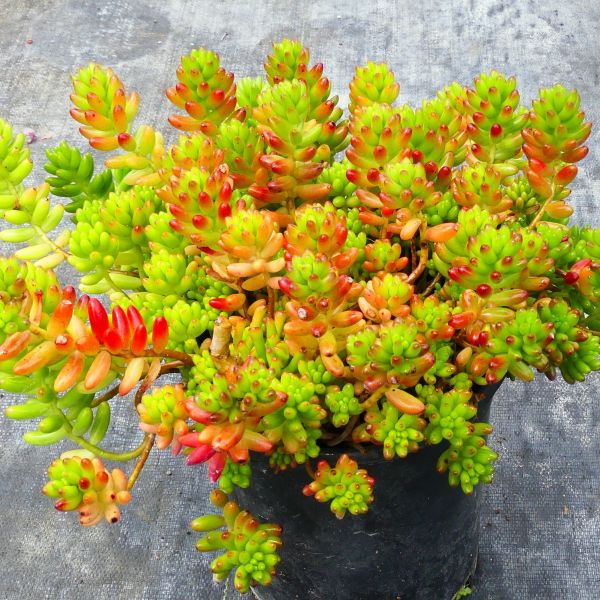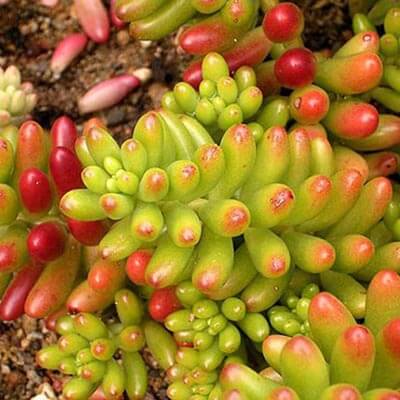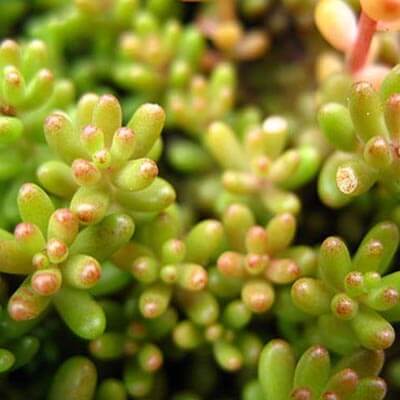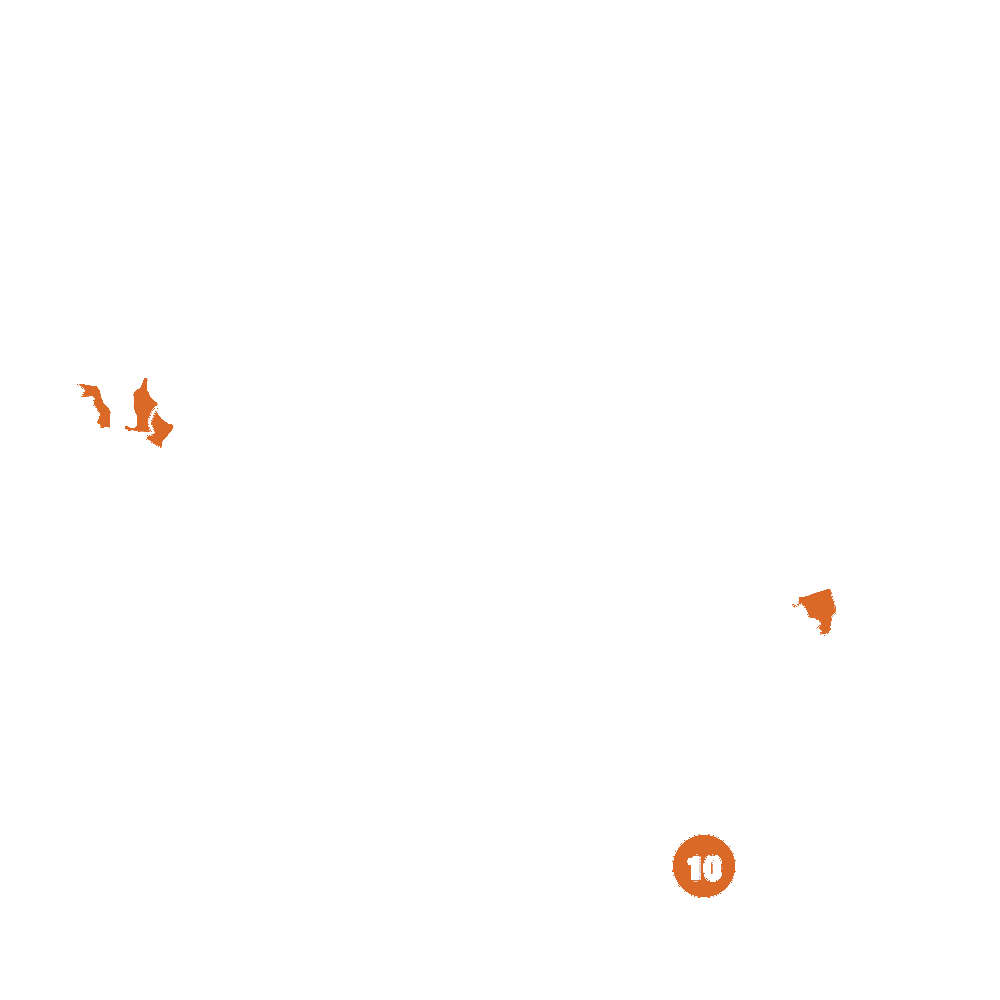


Sedum Rubrotinctum
Sedum rubrotinctum
87 reviews
Sedum Rubrotinctum
Sedum rubrotinctum
87 reviews
- Easy to care for and low maintenance plant
- Features stunning red and green coloration
- Produces small, star-shaped yellow flowers in the summer
- Recommended by landscape designers for optimal fit in real yards
$65.00
$93.00
30% Off
- Ships to in 7-10 Days
- Free Shipping Over $150
- Plant Arrival Guarantee
- In Stock
- Free Plant Consult
$200 - Landscape-Approved: Every Plant We Sell Comes With Design Expertise Behind It
1 Gallon
We are sorry, product is currently out of stock due to seasonal availability. Please check the "Related plants available in your area" section below
Not just beautiful - intentionally selected by ShrubHub's 3D landscape design team to fit real-world spaces and maximize yard potential.
Why Sedum Rubrotinctum?
Sedum Rubrotinctum, commonly known as Jelly Bean Sedum, is a popular succulent plant due to its unique appearance and ease of care. Its plump, oval-shaped leaves are green with hints of red and purple, resembling jelly beans. It enjoys bright, indirect sunlight and well-draining soil. Sedum Rubrotinctum can grow in outdoor gardens or indoors as part of a succulent collection and requires little watering, making it an ideal plant for beginners or those with busy schedules.
Sunlight
Sedum Rubrotinctum, often known as "Jelly Bean Plant" or "Pork and Beans," requires full sunlight to thrive. It prefers direct sunlight for at least 6 hours a day. Insufficient sunlight may result in weak growth and leggy stems.
Watering
Sedum Rubrotinctum, also known as Jelly Bean plant, has low watering requirements. It should be watered sparingly, allowing the soil to dry out between waterings. Overwatering can cause the plant to rot, so it is important to keep the soil relatively dry.
Fertilizing
Sedum Rubrotinctum, commonly known as Jelly Bean plant, requires a well-draining soil mix rich in organic matter. It does not have high fertilizer requirements and thrives in average to poor soil conditions. Minimal fertilization with a balanced, diluted l
The Out-of-the-Ordinary and Head-Turning Sedum rubrotinctum
To say Sedum Rubrotinctum is a one-of-a-kind, bizarre-looking plant that blows your mind away is an understatement! So, if you are thinking “unique”, “exotic”, and “beyond compare”, this exceptionally gorgeous accent plant is a full serving of boldness, freshness, and originality. Every inch of Sedum rubrotinctum ‘pork and beans’ shows off a fair share of singularity and uniqueness!
Bringing you to your knees in admiration whenever you pass by it, Sedum x rubrotinctum (Stonecrop) boasts vibrant, full-of-joy beauty that lends your space an in-a-class-by-itself character, drives up your property’s value, and invites exploration into nature’s inexplicable beauty!
If there’s only one thing that would -without a doubt- steal your focus, gently force you to marvel at its extraordinary beauty and encourage you to explore nature’s charming details, it is the impressive foliage!
Resembling jelly beans, the succulent chubby foliage graces your outdoor space with irresistible, intriguing sights. Bright green leaves give your garden a sense of freshness and vibrancy in winter while every other plant is dormant, reflecting nothing but muted, boring colors. Come summer, Sedum Rubrotinctum takes your breath away as the jelly beans turn entirely red, bringing quite a mystifying display to life!
There’s yet so much more to admire! In winter and early spring, the jelly bean plant blankets your garden with an abundance of sunny yellow flowers, inevitably enhancing the design of your home, summoning up a joyous, full-of-vibrancy look, and fashioning an outdoor space that makes you smile.
Give your space some bright and playful aesthetics that lighten up any lackluster scene with some yellow star-shaped flowers and breathtaking foliage!
Order your Sedum Rubrotinctum from ShrubHub now!
Plant Information:
| Botanical Name: | Sedum rubrotinctum |
| USDA Zones: | 9 - 11 |
| Water: | Low |
| Exposure: | Full Sun |
| Soil Needs: | Well Drained |
| Mature Height: | 6 - 8 inches |
| Mature Spread: | 8 - 12 inches |



Pollination Info
Pollination Info for Sedum Rubrotinctum (Sedum rubrotinctum)
Sedum Rubrotinctum (Sedum rubrotinctum) is a succulent plant that is pollinated primarily by bees. The tiny, star-shaped flowers of Sedum Rubrotinctum are attractive to many different species of bees, including honeybees, bumblebees, and mason bees.
The flowers of Sedum Rubrotinctum bloom in the late summer or early fall, producing clusters of small yellow flowers that grow on the tips of the plant's stems. These flowers are rich in nectar and pollen, making them a valuable food source for pollinators, especially as other sources of food become scarce towards the end of the growing season.
When bees visit the flowers of Sedum Rubrotinctum, they transfer pollen from the anthers to the stigma, fertilizing the flower and allowing it to produce seeds. Many different bee species are known to visit Sedum Rubrotinctum, including honeybees, bumblebees, mason bees, leafcutter bees, and sweat bees.
Because of its attractive flowers and its ability to support a diverse range of pollinators, Sedum Rubrotinctum is a great choice for any pollinator-friendly garden.
FAQ
Sedum Rubrotinctum (Sedum rubrotinctum) FAQ
1. What is Sedum Rubrotinctum?
Sedum Rubrotinctum, also known as Jelly Bean Plant, is a succulent with small, fleshy, green and red leaves resembling jelly beans. It is native to Mexico and is known for its low maintenance and easy to care nature.2. How to care for Sedum Rubrotinctum?
Sedum Rubrotinctum is a low maintenance plant and requires minimal care. It prefers bright, indirect sunlight and well-draining soil. Water the plant only when the soil is completely dry. Overwatering can lead to root rot.3. How to propagate Sedum Rubrotinctum?
Sedum Rubrotinctum is easy to propagate. Simply cut off a leaf or stem, allow it to callus for 1-2 days, and plant it in well-draining soil. Keep the soil moist and provide bright, indirect sunlight.4. What are the common pests and diseases for Sedum Rubrotinctum?
Sedum Rubrotinctum is generally resistant to pests and diseases. However, it may occasionally be affected by mealybugs, spider mites, or fungal infections. Regularly inspect the plant and treat any infestations or infections as soon as possible.5. How to fertilize Sedum Rubrotinctum?
Sedum Rubrotinctum does not require frequent fertilization. Use a balanced, all-purpose fertilizer once a month during the growing season. Avoid fertilizing during the dormant period.6. How to prune Sedum Rubrotinctum?
Sedum Rubrotinctum does not require frequent pruning. However, if the plant becomes too leggy, prune it back to encourage bushy growth. Use sterilized pruning shears and make clean cuts.7. Can Sedum Rubrotinctum be grown indoors?
Yes, Sedum Rubrotinctum can be grown indoors. It prefers bright, indirect sunlight and well-draining soil. Place it near a sunny window or use grow lights to provide adequate light. Be sure to allow the soil to dry out between watering.8. Is Sedum Rubrotinctum toxic to pets?
Sedum Rubrotinctum is non-toxic to pets, making it a safe choice for cat and dog owners.Planting & Care
Planting & Care for Sedum Rubrotinctum (Sedum rubrotinctum)
Planting
Sedum rubrotinctum can be grown outdoors in USDA hardiness zones 9-11 or as a houseplant. If planting outdoors, choose a location with well-draining soil and full sun. Plant sedums in the spring or fall. Dig a hole twice as wide and deep as the root ball and mix in some sand or gravel to improve drainage. Place the sedum in the hole and fill it with soil. Water thoroughly and then water only when the soil is dry.
Care
Watering: Sedum rubrotinctum is drought-tolerant but prefers well-drained soil. Water the sedum sparingly and never let the soil get too wet.
Light: Sedums like bright, sunny locations and can tolerate full sun. If grown indoors, place the sedum near a sunny window.
Soil: Sedum rubrotinctum prefers well-draining soil with a neutral pH. If planting in a container, use a potting mix with added sand or perlite to improve drainage.
Fertilizer: Sedums do not require fertilization, but you can use a balanced fertilizer in the spring if desired.
Propagation: Sedum rubrotinctum can be propagated by stem cuttings. Pinch off a few inches of a stem and let it dry for a few days before planting in well-draining soil.
Pests and Diseases: Sedums are not susceptible to many pests or diseases. However, overwatering can cause root rot and leaves may drop if the plant is stressed.
Pruning: Sedum rubrotinctum does not require pruning but you can pinch back the stem tips to encourage bushier growth.
By following these care instructions, your Sedum rubrotinctum should thrive and make a beautiful addition to any garden or collection.
Check Out These Verified Customer Reviews:
Customer Reviews
4.7 out of 5 based on 87 reviews
Thank you! Your review has been submitted.
The website was easy to navigate, and I found exactly what I was looking for. The purchasing process was seamless.
The shipment was quick, and the plants were well-packaged to ensure they arrived safely.
Healthy and well-packaged.
Item has been added to your cart.


